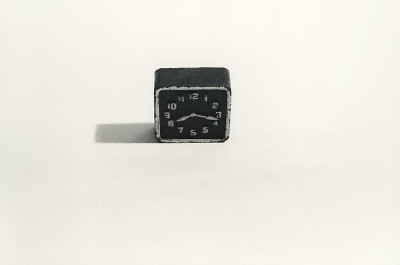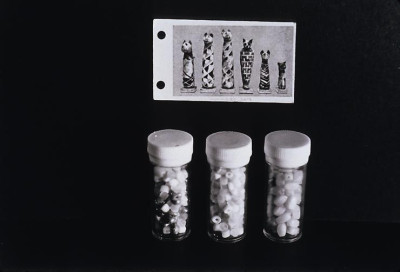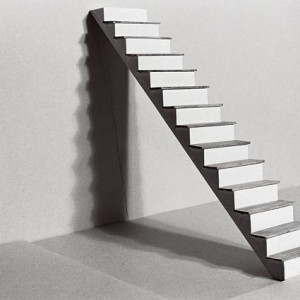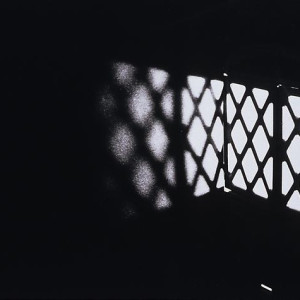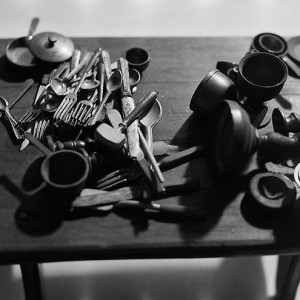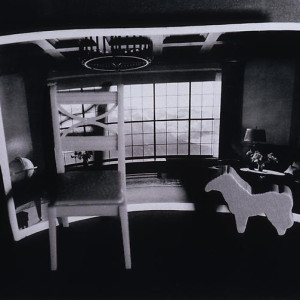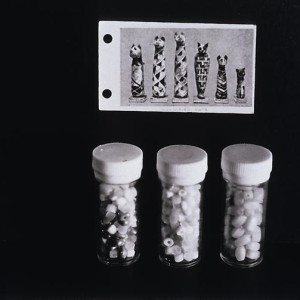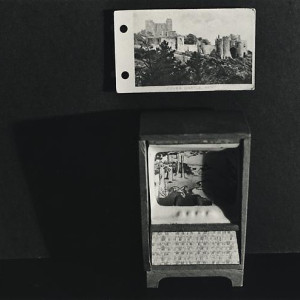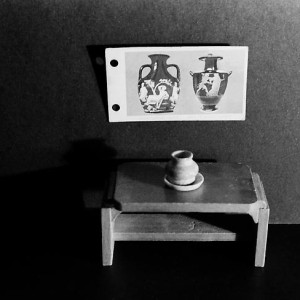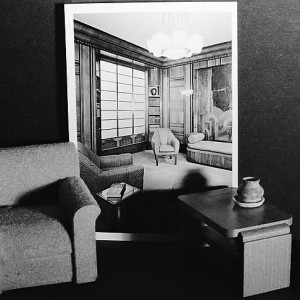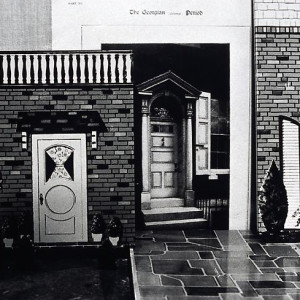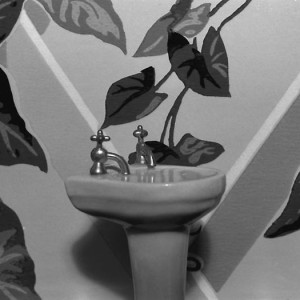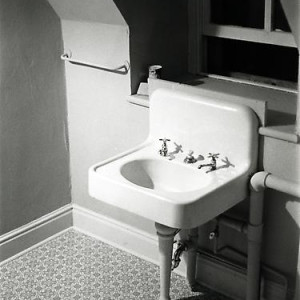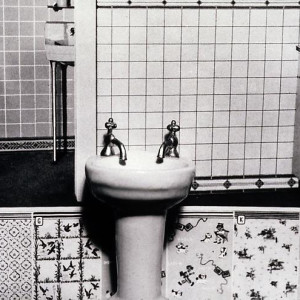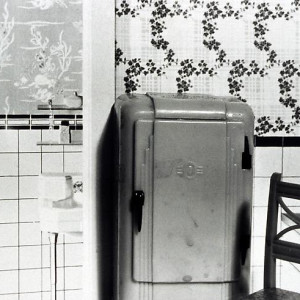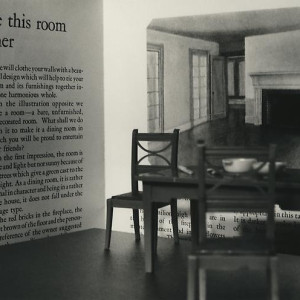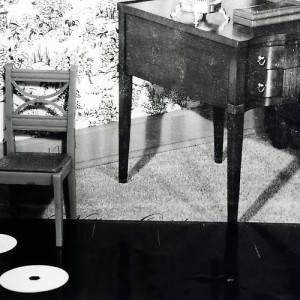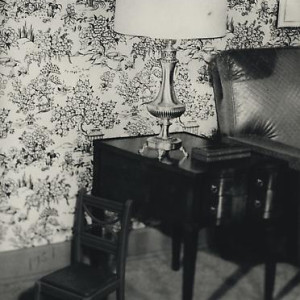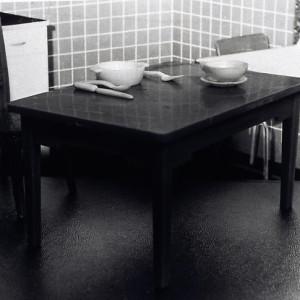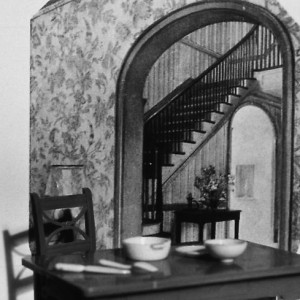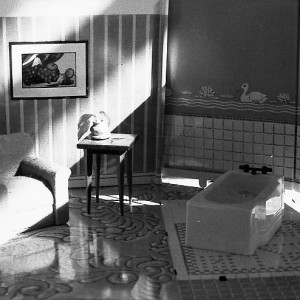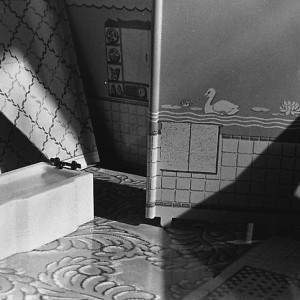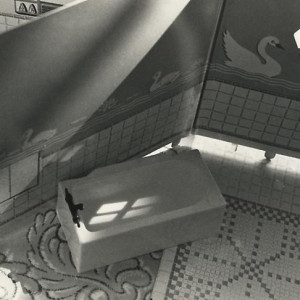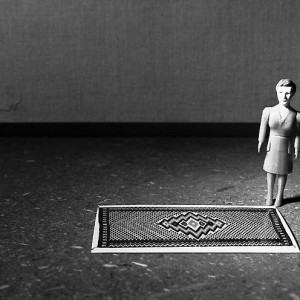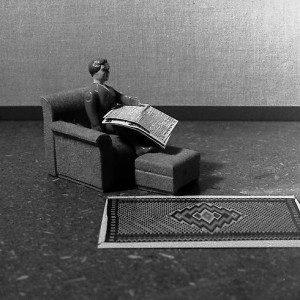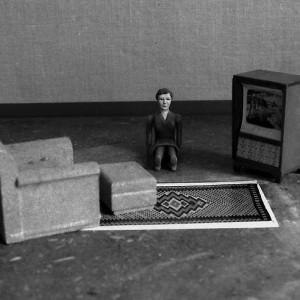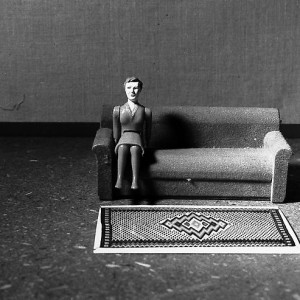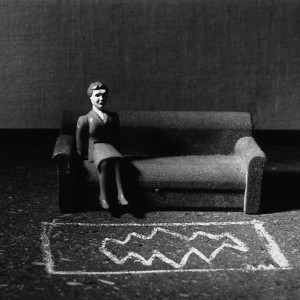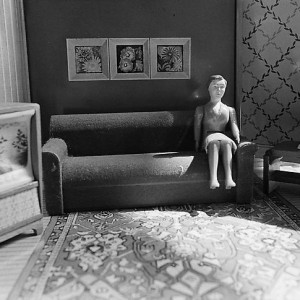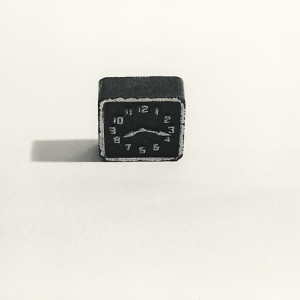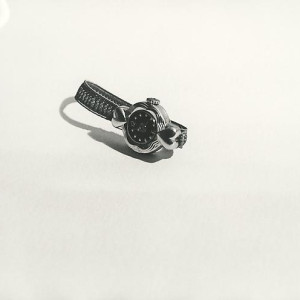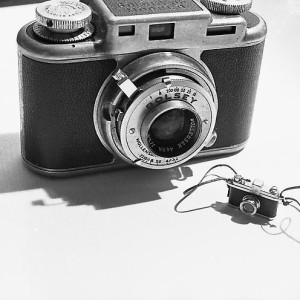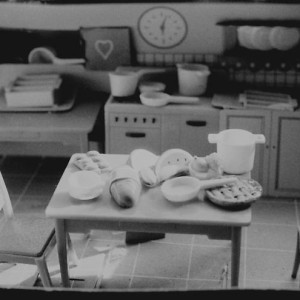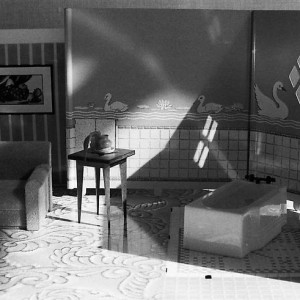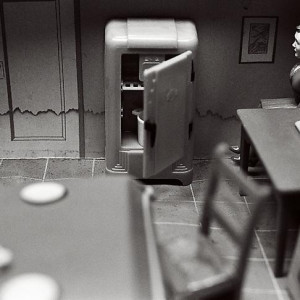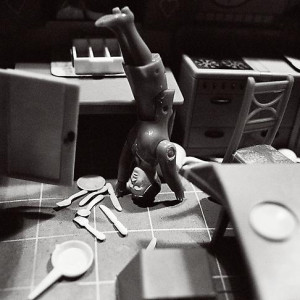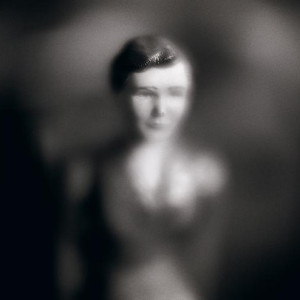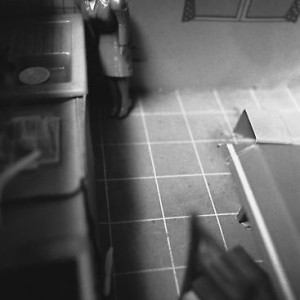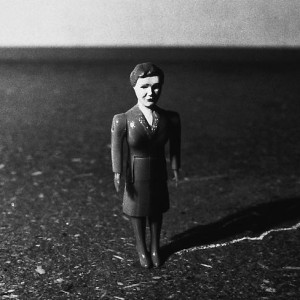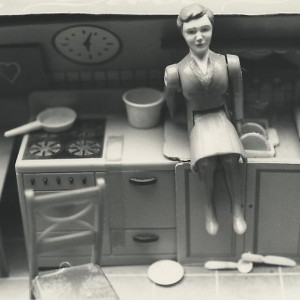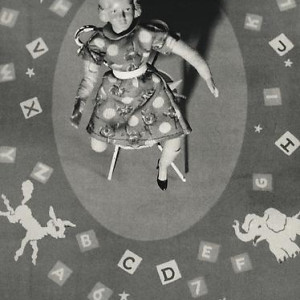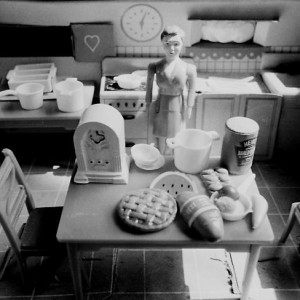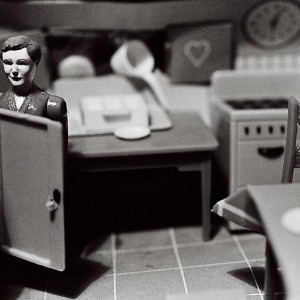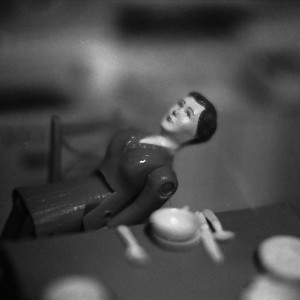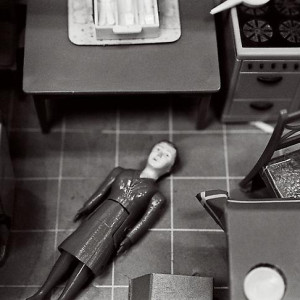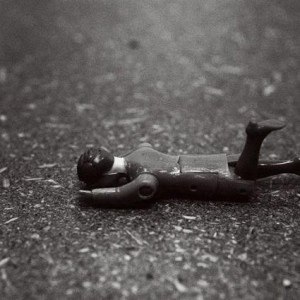Early Black and White, 1976–78
Sink/Ivy Wallpaper, 1976, from Simmons’s first formal series, Early Black and White, 1976–78, is, for her, “Photo #1” because through it she successfully realized the photographic aesthetic and feminist issues she was concerned with at the time. She began to combine incongruently scaled items from her inventory of props, miniature furniture, and wallpaper remnants, and she used toothpicks and cans of food as supports for her vignettes. Eventually, she found three elements that felt gratifying when she put them together: an ivy-patterned wallpaper and a doll house sink that she filled with water. By juxtaposing aspects from the real world with a prop, Simmons found that the ivy pattern was only subtly jarring in the final image and the water in the scaled-down pedestal sink made it more believable. The image was an exercise in creating a composition with enough information to be referential but without being overtly narrative. “Through these iterations of small, staged scenes, I was beginning to understand that I needed very little visual information to convey an idea.”
Thinking of composing a photograph as a birthday gift for her friend and fellow artist Jane Kaplowitz in 1976, Simmons unpackaged a doll in a purple dress from the 1950s—one of many she had purchased from a defunct toy store. The resulting image was her first photograph that pictured a doll. “I was calling her Jane for my friend, yet the name had multiple meanings—it was also my sister’s middle name and a neutral name, like Jane Doe—it could be anybody.” Situating the stoic Jane in doll house interiors evoked an element of performance, which eventually led the artist to more pointed explorations of cinematic genres later in her career.
--Andrea Karnes, Chief Curator, The Modern Art Museum of Fort Worth
Download: early-black-and-white.pdf
